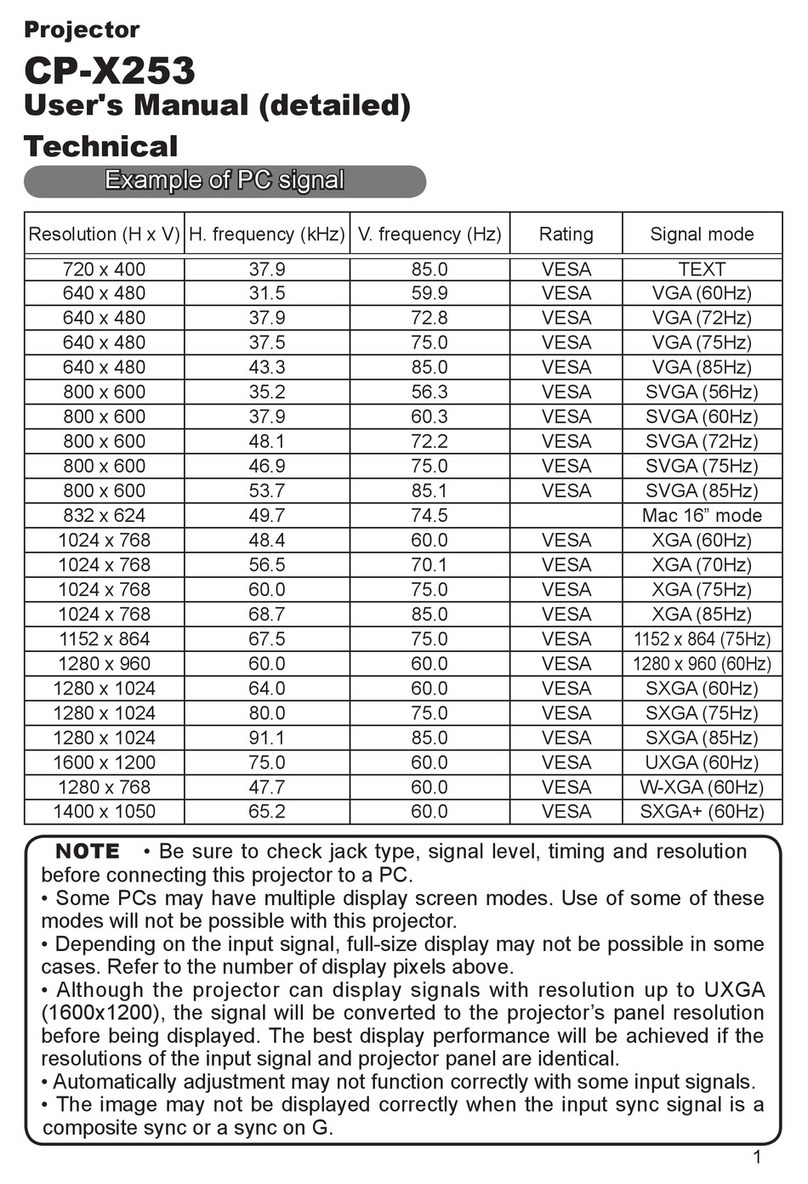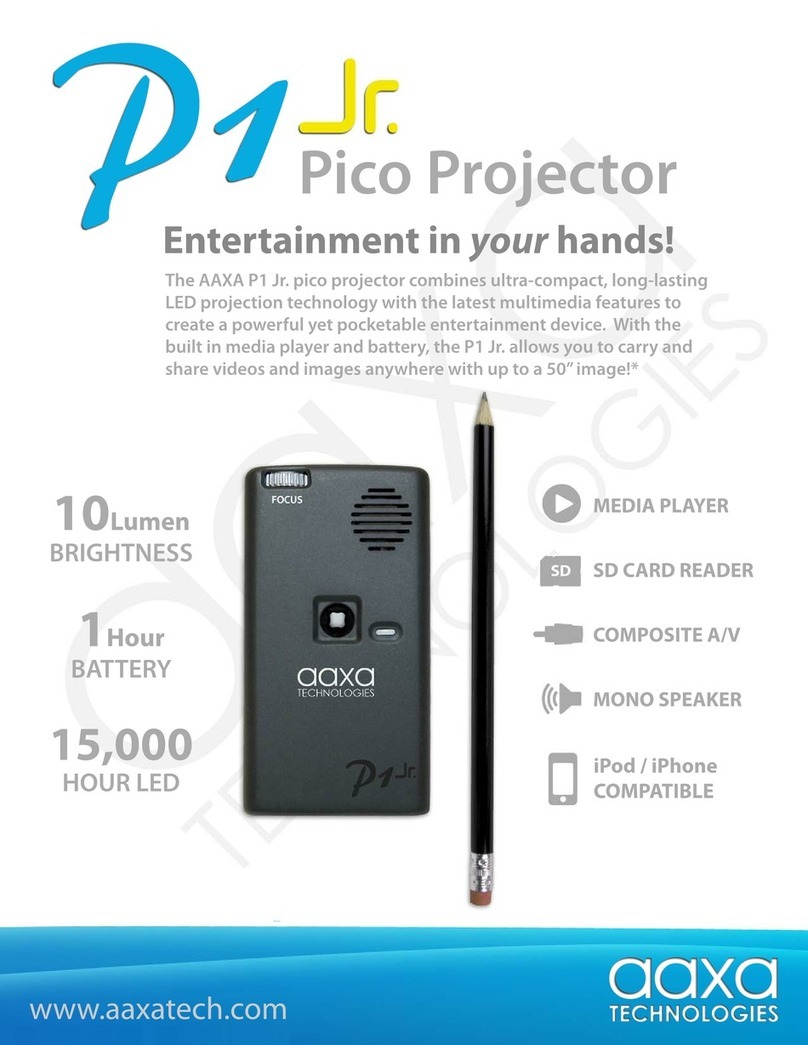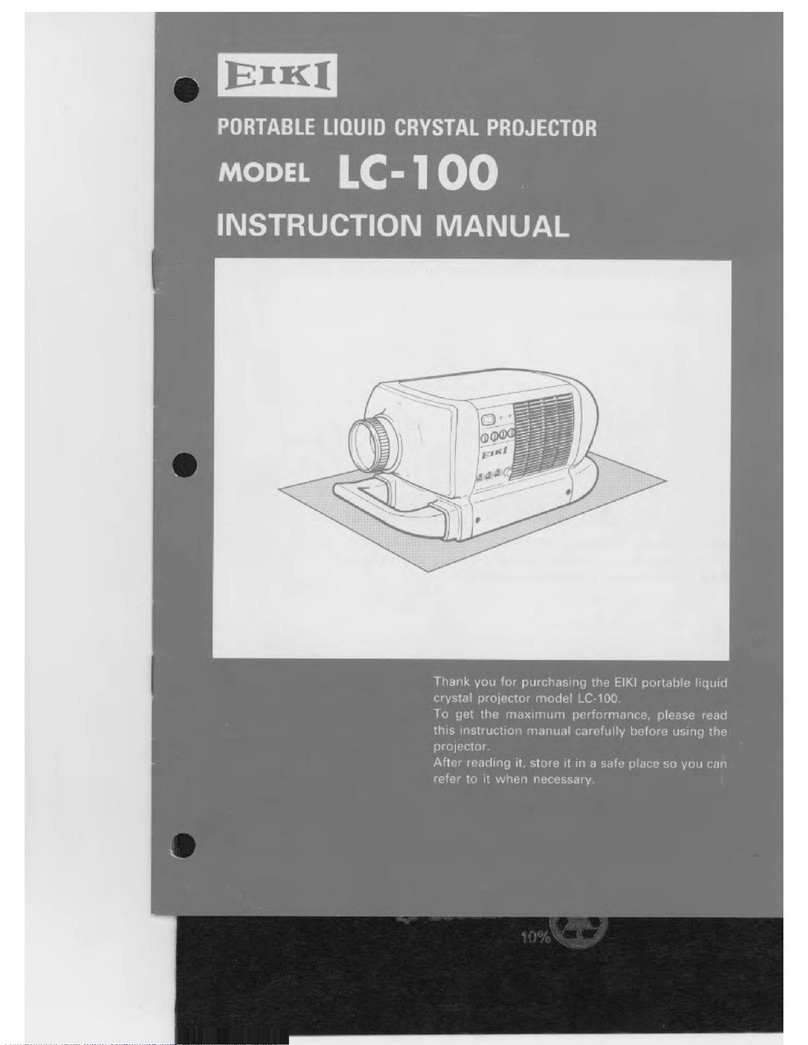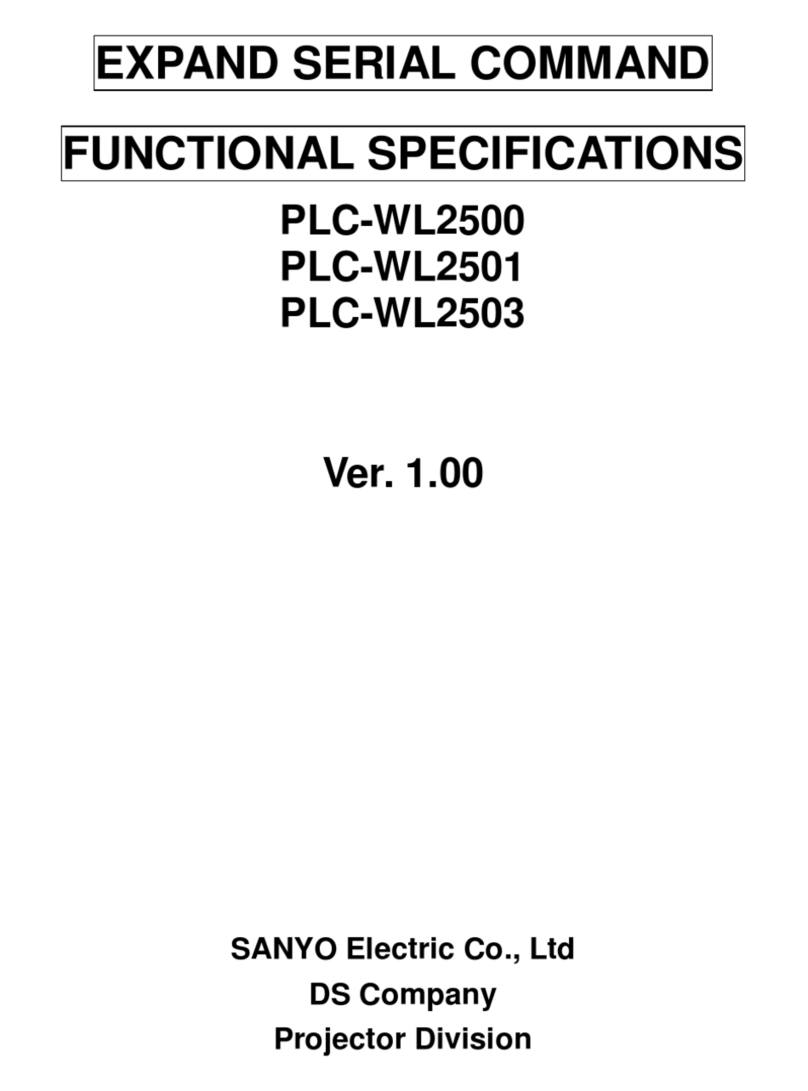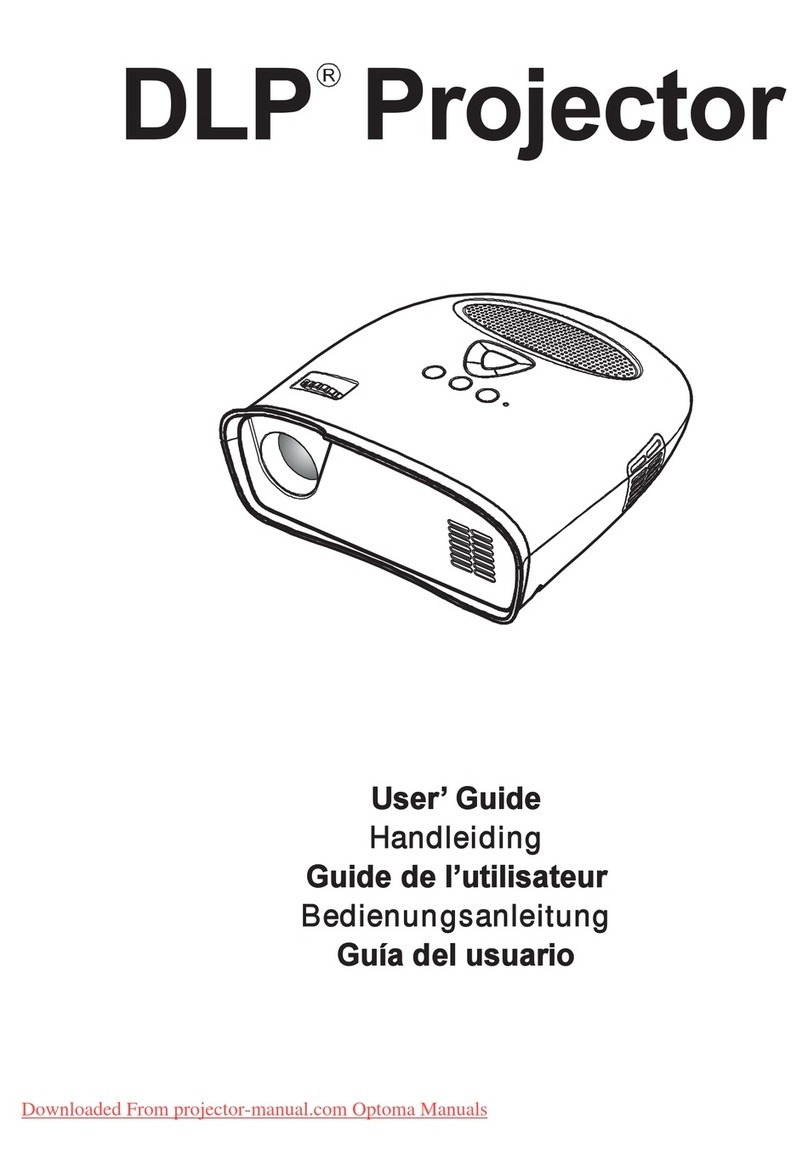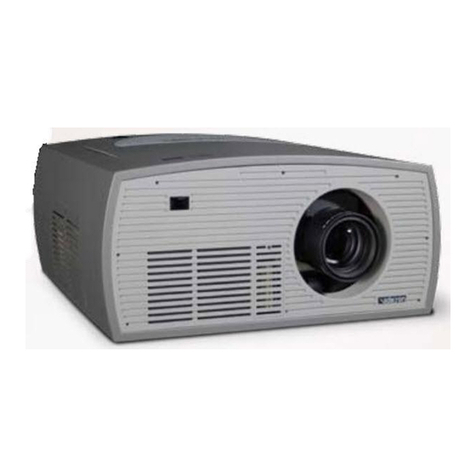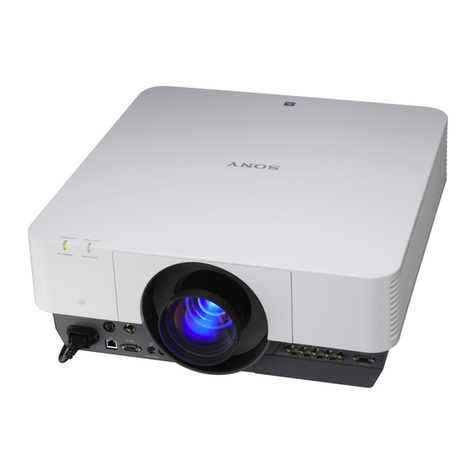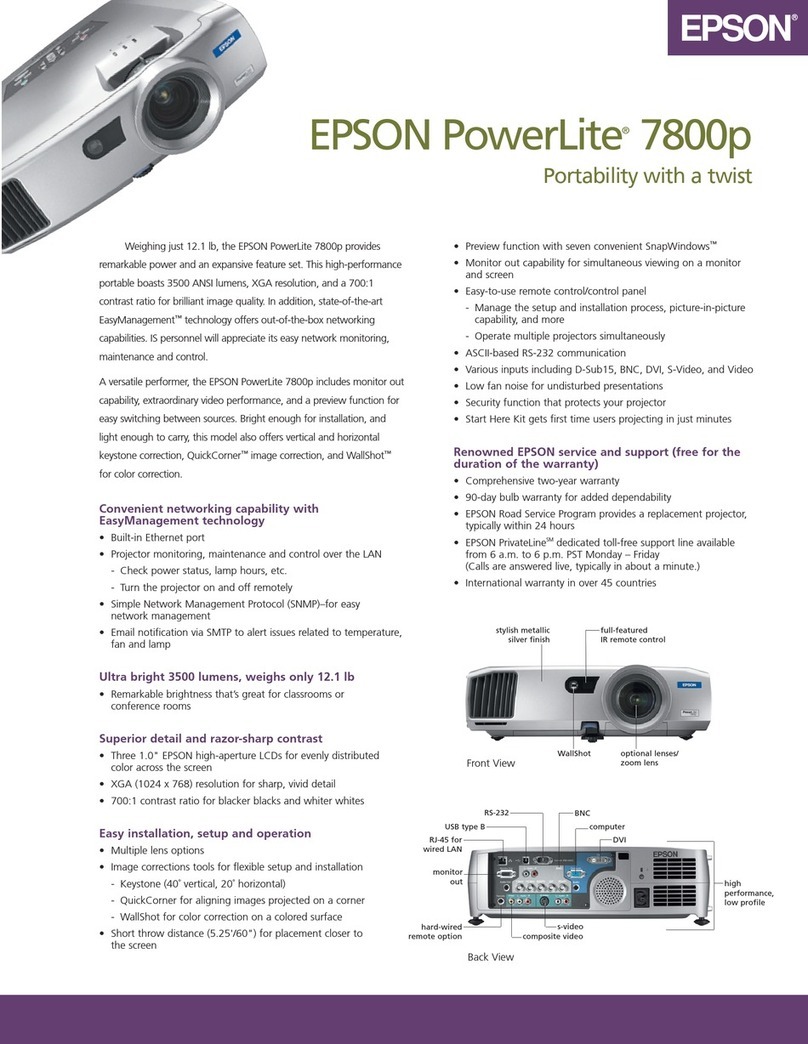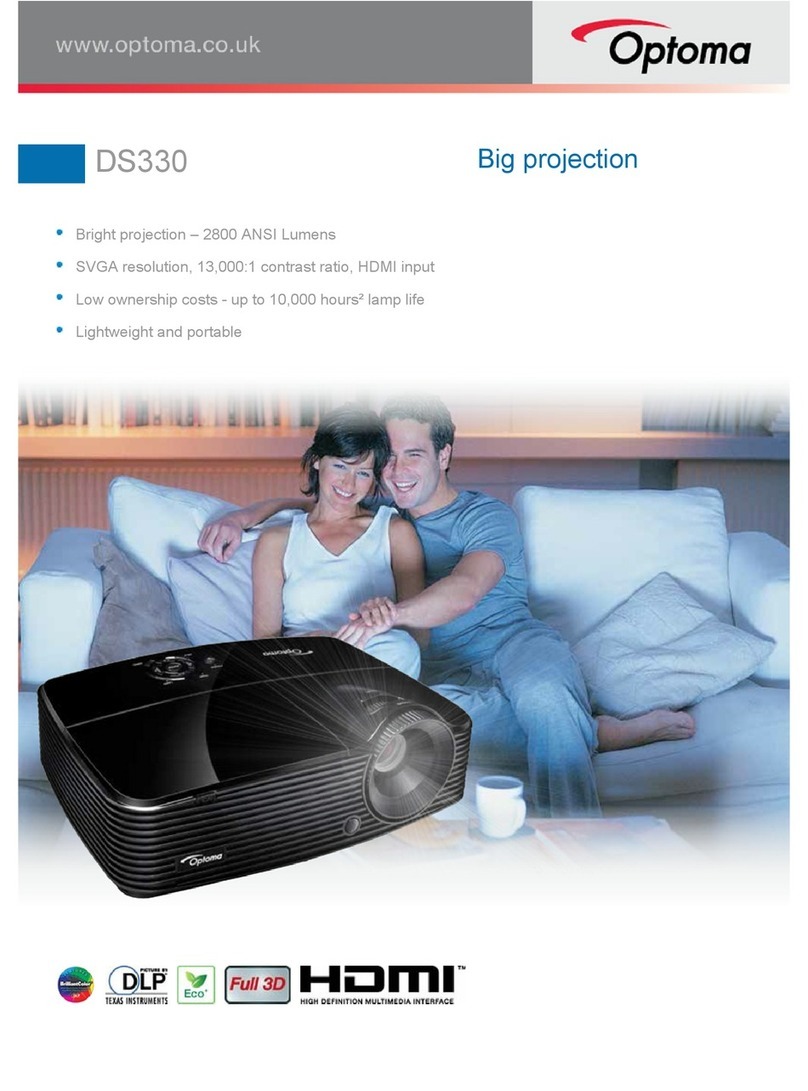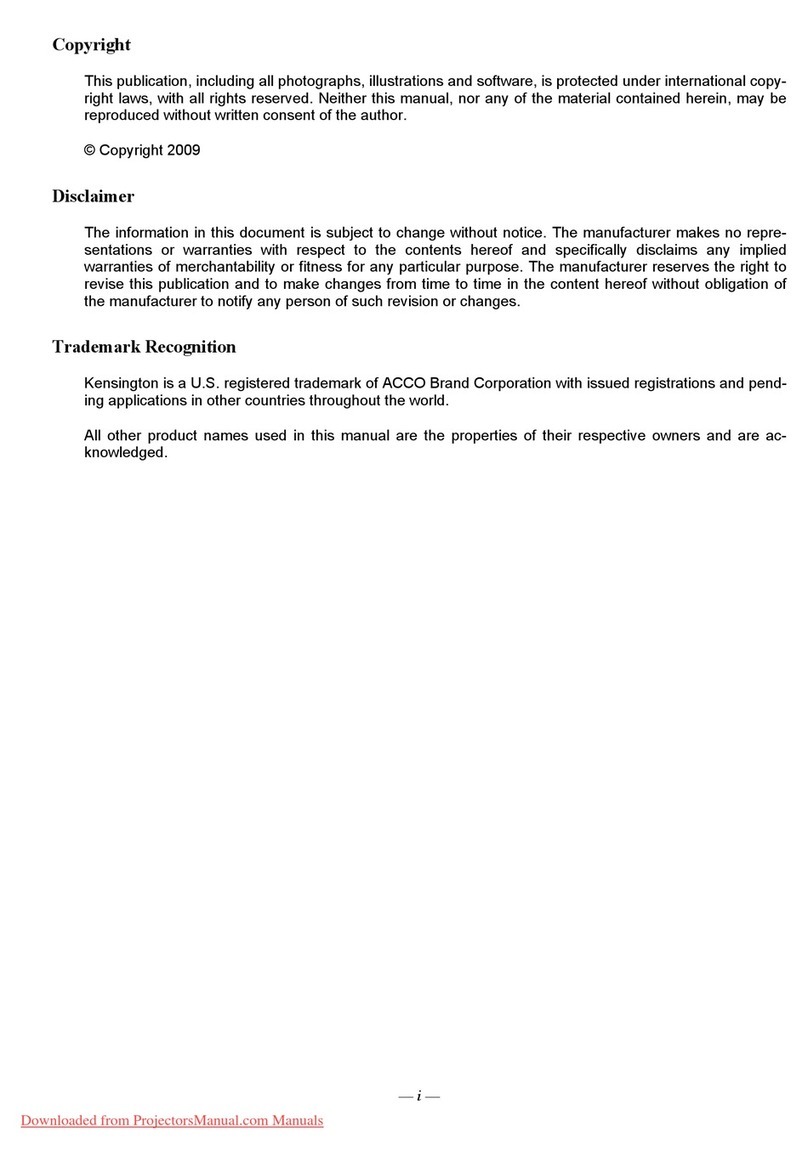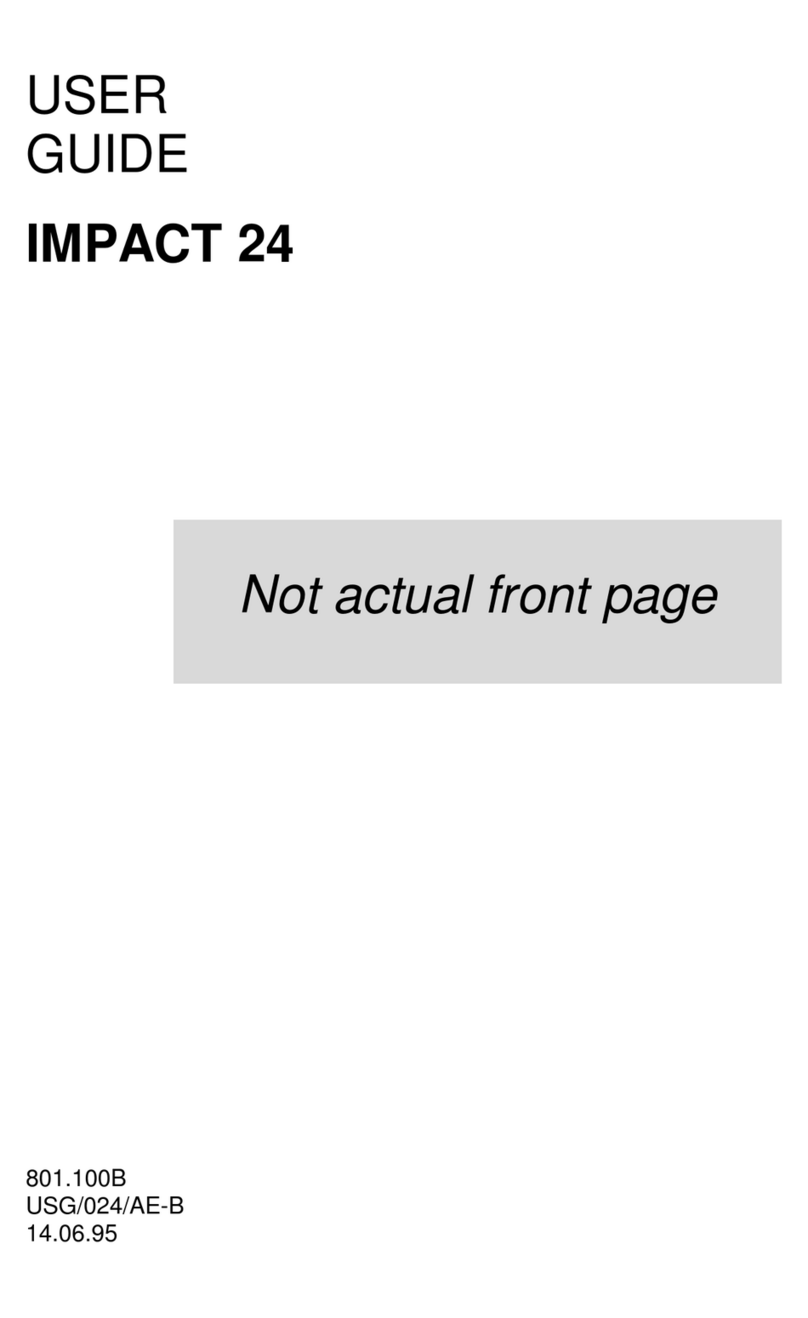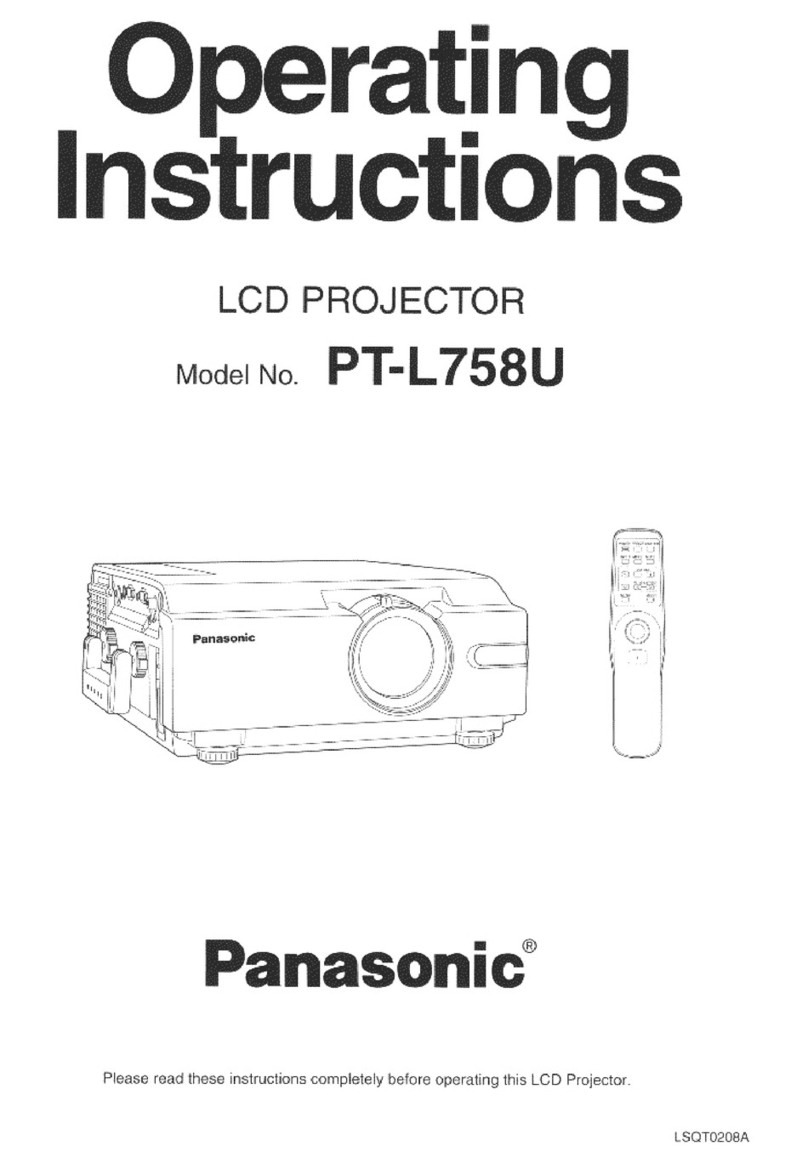Zenith PRO 1200 User manual

PV152 PRO1200 - SAFETY
PRODUCT SAFETY SERVICING GUIDELINES FOR AUDIO-VIDEO PRODUCTS
i
IMPORTANT SAFETY NOTICE
This manual was prepared for use only by properly trained audio-visual service
technicians.
When servicing this product, under no circumstances should the original
design be modified or altered without permission from Zenith Electronics
Corporation. All components should be replaced only with types identical to
those in the original circuit and their physical location, wiring and lead dress
must conform to original layout upon completion of repairs.
Special components are also used to prevent x-radiation, shock and fire hazard.
These components are indicated by the letter “x” included in their component
designators and are required to maintain safe performance. No deviations are
allowed without prior approval by Zenith Electronics Corporation.
Circuit diagrams may occasionally differ from the actual circuit used. This way,
implementation of the latest safety and performance improvement changes into
the set is not delayed until the new service literature is printed.
CAUTION: Do not attempt to modify this product in any way. Never perform
customized installations without manufacturer’s approval. Unauthorized
modifications will not only void the warranty, but may lead to property damage
or user injury.
Service work should be performed only after you are thoroughly familiar with
these safety checks and servicing guidelines.
GRAPHIC SYMBOLS
The exclamation point within an equilateral triangle is intended
to alert the service personnel to important safety information in
the service literature.
The lightning flash with arrowhead symbol within an equilateral
triangle is intended to alert the service personnel to the presence
of noninsulated “dangerous voltage” that may be of sufficient
magnitude to constitute a risk of electric shock.
The pictorial representation of a fuse and its rating within an
equilateral triangle is intended to convey to the service personnel
the following fuse replacement caution notice:
CAUTION: FOR CONTINUED PROTECTION AGAINST RISK OF FIRE,
REPLACE ALL FUSES WITH THE SAME TYPE AND RATING AS MARKED
NEAR EAch FUSE.
SERVICE INFORMATION
While servicing, use an isolation transformer for protection from AC line shock.
After the original service problem has been corrected, make a check of the
following:
FIRE AND SHOCK HAZARD
1. Be sure that all components are positioned to avoid a possibility of
adjacent component shorts. This is especially important on items trans-
ported to and from the repair shop.
2. Verify that all protective devices such as insulators, barriers, covers,
shields, strain reliefs, power supply cords, and other hardware have been
reinstalled per the original design. Be sure that the safety purpose of the
polarized line plug has not been defeated.
3. Soldering must be inspected to discover possible cold solder joints, solder
splashes, or sharp solder points. Be certain to remove all loose foreign
particles.
4. Check for physical evidence of damage or deterioration to parts and compo-
nents, for frayed leads or damaged insulation (including the AC cord), and
replace if necessary.
5. No lead or component should touch a receiving tube or a resistor rated at
1 watt or more. Lead tension around protruding metal surfaces must be
avoided.
6. After reassembly of the set, always perform an AC leakage test on all exposed
metallic parts of the cabinet (the channel selector knobs, antenna terminals,
handle and screws) to be sure that set is safe to operate without danger of
electrical shock. DO NOT USE A LINE ISOLATION TRANSFORMER DURING THIS
TEST. Use an AC voltmeter having 5000 ohms per volt or more sensitivity in
the following manner: Connect a 1500 ohm, 10 watt resistor, paralleled by
a .15 mfd 150V AC type capacitor between a known good earth ground
water pipe, conduit, etc.) and the exposed metallic parts, one at a time.
Measure the AC voltage across the combination of 1500 ohm resistor and
.15 mfd capacitor. Reverse the AC plug by using a non-polarized adaptor
and repeat AC voltage measurements for each exposed metallic part. Voltage
measured must not exceed 0.75 volts RMS. This corresponds to 0.5 milliamp
AC. Any value exceeding this limit constitutes a potential shock hazard and
must be corrected immediately.
X-RADIATION
1. Be sure procedures and instructions to all service personnel cover the
subject of x-radiation. The only potential source of x-rays in current TV
receivers is the picture tube. However, this tube does not emit x-rays when
the HV is at the factory-specified level. The proper value is given in the
applicable schematic. Operation at higher voltages may cause a failure of
the picture tube or high-voltage supply and, under certain circumstances
may produce radiation in excess of desirable levels.
2. Only factory-specified CRT anode connectors must be used.
3. It is essential that the service personnel have available an accurate and
reliable high-voltage meter.
4. When the high-voltage circuitry is operating properly, there is no possibility
of an x-radiation problem. Every time a color Chassis is serviced, the
brightness should be run up and down while monitoring the high voltage
with a meter, to be certain that the high voltage does not exceed the
specified value and that it is regulating correctly.
5. When troubleshooting and making test measurements in a product with a
problem of excessively high voltage, avoid being unnecessarily close to
the picture tube and the high voltage power supply. Do not operate the
product longer than necessary to locate the cause of excessive voltage.
6. Refer to HV, B+, and shutdown adjustment procedures described in the
appropriate schematics and diagrams (where used).
IMPLOSION
1. All direct view picture tubes are equipped with an integral implosion
protection system; take care to avoid damage during installation.
2. Use only the recommended factory replacement tubes.
TIPS ON PROPER INSTALLATION
1. Never install any receiver in a closed-in recess, cubbyhole, or closely
fitting shelf space over, or close to, a heat duct, or in the path of heated
air flow.
2. Avoid conditions of high humidity such as: outdoor patio installations
where dew is a factor, near steam radiators where steam leakage is a factor,
etc.
3. Avoid placement where draperies may obstruct venting. The customer
should also avoid the use of decorative scarves or other coverings that
might obstruct ventilation.
4. Wall- and shelf-mounted installations using a commercial mounting kit
must follow the factory-approved mounting instructions. A product mounted
to a shelf or platform must retain its original feet (or the equivalent
thickness in spacers) to provide adequate air flow across the bottom. Bolts
or screws used for fasteners must not touch any parts or wiring. Perform
leakage tests on customized installations.
5. Caution customers against mounting a product on a sloping shelf or in a
tilted position, unless the receiver is properly secured.
6. A product on a roll-about cart should be stable in its mounting to the cart.
Caution the customer on the hazards of trying to roll a cart with small
casters across thresholds or deep pile carpets.
7. Caution customers against using a cart or stand that has not been listed
by Underwriters Laboratories, Inc. for use with its specific model of
television receiver or generically approved for use with TVs of the same or
larger screen size.
8. Caution customers against using extension cords. Explain that a forest of
extensions, sprouting from a single outlet, can lead to disastrous
consequences to home and family.
A.C. Voltmeter
1500 OHM
10 WATT
Place this probe
on each exposed
metal part.
Good Earth Ground
such as the Water
Pipe, Conduit, etc.
0.15uF

PV152 PRO1200 - SAFETY
SAFETY INSTRUCTIONS
Safety.................................... Inside Front Cover
SECT 1 ......... INSTALL GUIDELINES
Environment ................................................1-1
What about ambient light ? ...........................1-1
Which screen type?.......................................1-1
What image size?How big should the
image be? ...................................................1-1
Where to install the projector ? ......................1-1
Mounting Configuration ................................1-2
Access to Controls ........................................1-3
OPENING THE TOP COVER ................................1-3
Removing the top cover ................................1-3
Re-installing the top cover ............................1-3
Scan Adaptation ..........................................1-4
Getting access to the scan switches ................1-4
Horizontal scan switches ...............................1-4
Vertical scan switch ......................................1-5
Setting the projector address .........................1-7
Power-up mode............................................1-8
Operational mode .........................................1-8
Stand-By mode ............................................1-8
Baud Rate for communication with a
computer ....................................................1-9
Password mode ............................................1-9
AC Power cord connection .............................1-10
Preparing your power cord .............................1-10
AC Power check ............................................1-10
AC Input power voltage adaptation .................1-10
Switching on the projector............................1-11
Starting up with a full white image .................1-11
Starting up with “warm up period”..................1-11
Starting up without “warm up period” .............1-11
Signal input connection................................1-12
Connecting a Composite Video source to
Port 1 ........................................................1-13
Connecting a S-Video (or Composite Video)
source to Port 2...........................................1-13
Connecting a RGB Analog source to Port 3 .......1-13
Connecting a RGB Analog source to Port 4/5 ....1-14
Connecting a Component Video source to
Port 4/5 .....................................................1-14
Connecting a RGB Analog source with Tri-level
sync to Port 4/5 ..........................................1-15
Connecting a Component Video source with
Tri-level sync to Port 4/5 ..............................1-15
Before starting any adjustment.......................1-16
Semplifuge Adjustment..................................1-17
Access to Installation Adjustment Mode...........1-18
Overview flowchart of the Installation
Adjustment Mode .........................................1-18
Projector Distance ........................................1-19
Optical Lens Focusing ...................................1-19
Raster Centering...........................................1-20
CRT Projection Angle Adjustment ....................1-21
Convergence ................................................1-23
Geometry Adjustment ....................................1-23
Horizontal Phase Adjustment..........................1-23
Left/Right (East/West) Adjustment .................1-24
Left Side Correction ......................................1-25
Top/Bottom (North/south) Adjustment ............1-26
W/M Correction ............................................1-27
Horizontal Size Adjustment ............................1-27
Vertical Linearity Adjustment .........................1-28
Vertical Size Adjustment ................................1-28
Blanking Adjustment.....................................1-29
Convergence Adjustment ...............................1-30
Color, Sync, Peaking Adjustment .....................1-31
Random Access Adjustment Mode....................1-31
Picture Tuning.............................................1-31
Color Balance ...............................................1-31
Sync Fast/Slow Adjustment ............................1-31
Clamp Tuning...............................................1-31
Messages, Warnings, and Failure Codes.............1-32
Ceiling Mount Support ..................................1-34
G2 adjustment .............................................1-35
Focus .........................................................1-36
Gamma corrections .......................................1-37
SECT 2 ........ CIRCUIT DESCRIPTION
EHT ............................................................2-1
RGB Otput ...................................................2-2
SMPS..........................................................2-3
Horizontal Deflection ....................................2-6
Sync and Vertical Deflection / HDTV ................2-7
Electromagnetic Focus ..................................2-13
G2 and Diagnostic ........................................2-15
Controller ....................................................2-17
Convergence Output .....................................2-18
Dynamic Astigmatism ....................................2-18
Convergence Driver .......................................2-19
RGB Driver ...................................................2-21
Video Amplifier ............................................2-24
Decoder and Comb Filter ................................2-25
IR Transmitter..............................................2-27
SECT 3 ................... ADJUSTMENTS
CRT Projector Service Kit ...............................3-1
EHT Module .................................................3-2
SMPS Module ...............................................3-2
Horizontal Deflection Module ........................3-4
Sync and Vertical Deflection Module ................3-5
Magnetic Focus and Horizontal Shift ...............3-6
SMPS-2 and G2 ............................................3-6
Horizontal Amplitude / Switching ...................3-6
Floor and Ceiling Switching ...........................3-7
Convergence Drive Module .............................3-7
RGB Input & Switching .................................3-9
Video Amplifier ............................................3-10
TABLE OF CONTENTS

PV152 PRO1200 - SAFETY
Quad Decoder and Comb Filter ........................3-11
Picture Alignment ........................................3-12
PROVERGE setup ...........................................3-14
Converge Error Codes.....................................3-22
SECT 4 ............................. PARTS
Module Part .................................................4-1
SECT 5 .............. EXPLODED VIEWS
Model Pro 1200 ...........................................5-1
SECT 6 ..................... SCHEMATICS
Main input ..................................................6-1
SMPS..........................................................6-2
SMPS Sub Unit .............................................6-3
Second SMPS & G2........................................6-4
EHT ............................................................6-5
Horizontal Deflection 1/2 ..............................6-6
Horizontal Deflection 2/2 ..............................6-7
Horizontal Amplitude Coils .............................6-8
Vertical Deflection 1/2 ..................................6-9
Vertical Deflection 2/2 ..................................6-10
Vertical + Sync Sub Unit 1/2..........................6-11
Vertical + Sync Sub Unit 2/2..........................6-12
Focus & Shift 1/6.........................................6-14
Focus & Shift 2/6.........................................6-15
Focus & Shift 3/6.........................................6-16
Focus & Shift 4/6.........................................6-17
Focus & Shift 5/6.........................................6-18
Focus & Shift 6/6.........................................6-19
Dynamic Astigmatism 1/4 ..............................6-20
Dynamic Astigmatism 2/4 ..............................6-21
Dynamic Astigmatism 3/4 ..............................6-22
Dynamic Astigmatism 4/4 ..............................6-23
Convrgence Driver 1/7...................................6-24
Convrgence Driver 2/7...................................6-25
Convrgence Driver 3/7...................................6-26
Convrgence Driver 4/7...................................6-27
Convrgence Driver 5/7...................................6-28
Convrgence Driver 6/7...................................6-29
Convrgence Driver 7/7...................................6-30
Convergence Output .....................................6-31
Controler 1/4...............................................6-32
Controler 2/4...............................................6-33
Controler 3/4...............................................6-34
Controler 4/4...............................................6-35
Decoder & Comb Filter 1/4 .............................6-36
Decoder & Comb Filter 2/4 .............................6-37
Decoder & Comb Filter 3/4 .............................6-38
Decoder & Comb Filter 4/4 .............................6-39
RGB Input & Switching 1/8 ...........................6-40
RGB Input & Switching 2/8 ...........................6-41
RGB Input & Switching 3/8 ...........................6-42
RGB Input & Switching 4/8 ...........................6-43
RGB Input & Switching 5/8 ...........................6-44
RGB Input & Switching 6/8............................6-45
RGB Input & Switching 7/8 ...........................6-46
RGB Input & Switching 8/8 ...........................6-47
Second RGB Input ........................................6-48
RS232 Comunications Interface ......................6-49
RGB Driver 1/5 .............................................6-50
RGB Driver 2/5 .............................................6-51
RGB Driver 3/5 .............................................6-52
RGB Driver 4/5 .............................................6-53
RGB Driver 5/5 .............................................6-54
Output Amplifier ..........................................6-55
Output & Socket 1/3 ....................................6-56
Output & Socket 2/3 ....................................6-57
Output & Socket 3/3 ....................................6-58
IR Transmitter..............................................6-59

INST
ALLA
TION GUIDELINES
PV152 1-1 PRO1200 INSTALLATION GUIDE
Installation guidelines
Careful consideration of things such as image size, ambi-
ent light level, projector placement and type of screen to
use are critical to optimize the use of the projection
system.
Environment
Do not install the projection system in a site near heat
sources such as radiators or air ducts, or in a place subject
todirectsunlight,excessivedustorhumidity.Beawarethat
room heat rises to the ceiling; Make sure the temperature
near the installation site is not excessive.
What about ambient light ?
The ambient light level of any room is made up of direct or
indirect sunlight and the light fixtures in the room. The
amount of ambient light will determine how bright the
image will appear. So, avoid direct light on the screen as
much as possible.
Windows that face the screen should be covered by opaque
draperywhilethesetisbeingviewed.Itisdesirabletoinstall
the projecting system in a room whose walls and floor are of
non-reflecting material. The use of recessed ceiling lights
andamethodofdimmingthoselightstoanacceptablelevel
is also important. Too much ambient light results in a ‘wash
out’ of the projected image. This appears as less contrast
screen is minimal.
Which screen type?
Therearetwomajorcategoriesofscreensusedforprojection
equipment.Thoseusedforfrontprojectedimagesandthose
for rear projection applications.
Where to install the projector ?
To indicate a correct installation position it is necessary to
know :
•The distance from projector to ceiling in case of Ceiling
mounted or the distance from projector to floor in case
of Table mounted;
•The distance from projector to screen.
Screensareratedbyhowmuchlighttheyreflect(ortransmit
in case of rear projection systems) given a determined
amount of light projected toward them. The ‘GAIN’ of a
screenisthetermused. Frontandrearscreensarebothrated
intermsofgain.Thegainofscreensrangefromawhitematte
screen with a gain of 1 (x1) to a brushed aluminized screen
with a gain of 10 (x10) or more. Another important
considerationisthe degreethescreen'sgainvaries withthe
horizontal and vertical viewing angle. The choice between
higher and lower gain screens is largely a matter of personal
preference.
In considering the type of screen to choose, determine
wheretheviewerswillbelocatedandgoforthehighestgain
screen possible. A high gain screen will provide a brighter
picture but reduce the viewing angle.
For more information about screens, contact your local
screen supplier.
What image size? How big should the image be?
Theprojectorisdesignedforprojectinganimagewidthfrom
1.4m (4.6') to 6m (20') with an aspect ratio of 4 to 3. It
leaves the factory, adjusted as a ceiling/front projector for
a screen width of 2.4m (7.8').
Changingthe imagesizefromthefactorypresetsizerequires
a realignment of the projector.

INST
ALLA
TION GUIDELINES
PV152 1-2 PRO1200 INSTALLATION GUIDE
Tofindthecorrectpositionfortheprojector,equippedwith
HD8 lenses, use the following formulas:
Abbreviations used in the calculations and the drawings :
B=Distance between ceiling and top of the screen (Ceil-
ingmounted)ordistancebetweenfloorandbottomof
the screen (Table mounted).
A=Correction Value, extra value to be added to B to
•Install the projector water levelled in both directions
•Install the projector perpendicular to the screen
ACD
PD
B
Screen
Projector
Ceiling
Screen width
SW
Front view
Top view
Inmetric: PD[cm] = SW (cm) *1.1358 + 18.53 (cm)
A[cm] = SW (cm) *0.142 - 25.26 (cm)
obtainthecorrectinstallationposition(Insomecases
the A value can be negative).
CD =Total distance between projector and ceiling (Ceiling
mounted) or total distance between projector and
floor (Table mounted).
CD = A + B.
Ceiling Mounted : when the result is negative, enlarge
the distance between ceiling and top of the screen,
mountscreenlower,untilCDbecomes zeroor positive.
Table Mounted : when the result is negative, enlarge
the distance between floor and bottom of the screen,
mount screen higher, until CD becomes zero or posi-
tive.
SW =Screen width.
PD =Perpendiculardistancebetweenscreenandprojector's
mount.
To obtain the right values, you can make use of the new
option included in the Installation Adjustment Mode to let
theprojectorcalculatetheparametersautomatically. Please
refer to Chapter 8 for details.
Usedphosphor widthontheCRT faceplate(e.g.greenCRT)
Mounting Configuration
Ceiling Mount
Toinstall theZENITHPRO1200 intheCeiling configuration,
use ZENITH'S Ceiling Mount Kit - Order Number PJR1200CE.
Installation instructions are included with this kit.
11.5 cm
green phosphor
(4.5inch)
r

INSTALLATION SETUP
PV152 1-3 PRO1200 INSTALLATION SETUP
Removing the top cover
During some installations, it will be convenient to remove
the top cover from the projector totally.
Proceed as follows :
•Pivot the top cover backwards 90° (fully extended);
•Push carefully the top cover to the left side (viewing from
therearoftheprojector)untilthehingesaredisengaged.
This can be facilitated by pressing downwards on the
springtabs nextto thehinges. Slide the top cover off the
projector.
Reinstalling the top cover
To reinstall the top cover on the projector :
•Placethetopcoverinfront of thehinges (asshowninthe
picture) andpushinthedirectionoftheblackarrowuntil
the cover locks into the hinges;
•Pivot the top cover to close;
•Secure the locking screw by turning it clockwise with a
screwdriver.
WARNING :
Risk of electric shock !
Installation only by Zenith authorized service personnel !
Access to Controls
Opening the top cover
Duringtheprojectorsetupandinstallationitisnecessaryto
open the top cover. Follow the procedure described below
:
•Turn the locking screw with a screwdriver counter clock-
wise;
•Lift up and pivot the top cover.
WARNING :
The projector's top cover is not supported with locking
hinge.Openwithcareandsupportthecoverwithyourhand.

INSTALLATION SETUP
PV152 1-4 PRO1200 INSTALLATION SETUP
Scan Adaptation
The scan switches must be placed in the correct position which corresponds to the desired scanning configuration.
To change the scanning, it is necessary to remove the projector top cover and to open the protection plate.
For opening the projector's top cover, see 'Access to controls'.
WARNING !
TURN OFF PROJECTOR AND UNPLUG THE POWER
CORD BEFORE CHANGING THE SCAN DIRECTION.
To remove the horizontal deflection module :
-Press the module lock and lift up the module handle;
Side view
Top view
Top view
Side view
Push
Three switches are used, one for each CRT. When changing
the horizontal scan, insure that all three switches are set in
the same position. See positions of the switches (diagram
on next page) for the corresponding projector configura-
tion.
To set the scan switches :
•Remove the horizontal deflection module (the second
module viewing from the rear of the projector).
-Repeat this action on both sides of the module and
extract the module out of the main frame.
•Toggle the 3 horizontal scan inversion switches (located
justunderneaththe horizontalamplitudemodule)to the
correct positions (see p.4-3).
•Reinstall the horizontal deflection module.
Getting access to the scan
switches
•Open the top cover and remove it
from the projector (see p.4-1);
•Loosen the 3 retaining screws on
each side of the projector;
•Opentheprotectionplateandpivot
it forward (toward lenses).
Horizontalscanswitches
Horizontalamplitude
module
Connectors for the
horizontal deflection module
Horizontal Scan Switches

INSTALLATION SETUP
PV152 1-5 PRO1200 INSTALLATION SETUP
viewing from the rear of the projector).
To remove the vertical deflection module :
Side view
Top view
Top view
Side view
Push
Connectors for the vertical
deflection module
Vertical scan switch
FRONT - TABLE
REAR - TABLE
REAR - CEILING
FRONT - CEILING
Verticalscan
switch
Horizontal
scan switches
Vertical Scan Switch
One vertical switch is used for the three CRT's. See position
of the switch (diagrams) for the corresponding projector
configuration.
To set the vertical scan switch :
•Remove the vertical deflection module (the third module
Vertical deflection module
-Press the module lock and lift up the module handle;
-Repeat this action on both sides of the module and
extract the module out of the main frame.
•Toggle the vertical scan inversion switch to the correct
position.
•Reinstall the vertical deflection module.
Positions of the scan switches for the different mounting
configurations are illustrated on the right side.
After setting the scan switches, close the metal protection
plate and secure it with the retaining screws.
Closethetopcoverand reconnectthepowercordtothewall
outlet.
Note : Switching over from Floor to Ceiling or vice versa
requiresacompletereadjustmentofpicturegeometryand
convergence.

INSTALLATION SETUP
PV152 1-6 PRO1200 INSTALLATION SETUP
To check the current positions of the scan switches,
proceed as follows:
Attention :Thisprocedurecanonlybedoneafterpower(mains)
connection. So, first continue with the projector
setup and the connections and then return to this
procedure.
•Switch on the projector. The projector starts up on the
last selected source.
•Press the <ADJUST> key.
•Highlight 'SERVICE'bypushingthecontrolPadforwardor
backward and press the <ENTER> key: the 'SERVICE MODE
MENU'will be displayed.
•Highlight 'IDENTIFICATION'by pushing the control stick
forward or backward and press the <ENTER> key.
The projector will display the 'IDENTIFICATION SCREEN'.
This screen gives the current information about the projec-
tor configuration in the line entitled 'Config'.
All projectors leave the factory set for a ceiling/front
configuration.
SERVICE MODE
ADJUSTMENTMODE
Selectapa thfrom
b e low:
Selectwithor
the n <ENTER>
<EX IT>toreturn
sou rce1
GUIDED
RAN D OMAC C ESS
INSTAL L ATION
SERVICE
IRIS
Selectwithor
then <ENTER>
<E X IT>toreturn

PROJECTOR SETUP
PV152 1-7 PRO1200 PROJECTOR SETUP
StdBY
MAIN POWER
PROCESSOR CYCLES
BLOCKMATCH
ERROR
RCU
RCVDS
PC
PAUSE
PROJECTORADDRESS
(sum)
OFF ON
BAUD RATE TABLE
TO COMPUTER
POWER UP MODE
OPERATING MODE WHEN
POWER IS SWITCHED ON
ON
OFF PLAYING
StdBY
PASSWORD MODE
ON
OFF YES
NO
RESERVED
POWER UP MODE
PASSWORD MODE
BAUD RATE CODE
(sum)
PASSWORD REQUIRED
FOR ADJUSTMENT
CODE
0
1
2
3
4
5
6
7
SPEED
110
150
300
600
1200
2400
4800
9600
0
1
128
64
32
16
8
4
2
1
1
2
3
4
5
6
7
8
1
2
3
4
2
1
1
2
3
4
5
6
7
8
I
2C SHORTED
The DIP switches on the controller board allow theSETUP of
the projector :
•8 DIP switches for setting the projector address.
•1 DIP switch for setting the powerup mode.
•3 DIP switches for setting the baud rate for communica-
tion.
•1 DIP switch for setting the password mode.
To gain access to the DIP switches :
-Open the top cover.
-Loosentheretainingscrewsofthemetalprotectionplate
and pivot this plate to the lens side (Please refer to
Chapter 4 'Installation setup').
The DIP switches are located on the back side of this metal
protection plate.
Setting the projector address
The projector's address may be set to any value between 0
and 255.
Whentheaddressisset,theprojectorcanbecontrollednow
by :
•RCU for addresses between 0 and 9.
•IBM PC (or compatible) or Apple MAC for addresses
between 0 and 255.
Addressable with RCU
Addressable with PC, MAC
or workstation
0
9
255

PROJECTOR SETUP
PV152 1-8 PRO1200 PROJECTOR SETUP
1 128
264
332
416
58
64
72
81
Setting the address is a hardware SETUP of your projector
which must be done during installation. Use the 8 DIP
switchesprovidedonthecontrollerboardlabelled'Projector
Address'.
Each DIP switch has its own decimal value. The sum of the
values associated to those DIP switches gives the address.
As shown in the table, if Switch No. 1 is set to ON, it
representsadecimalvalueof128,SwitchNo.2for64,Switch
No.3 for 32, and so forth.
In the given example, the projector address is set to202 :
DIP switch No. :1 2 3 4 5 6 7 8
Position ON/OFF :1 1 0 0 1 0 1 0
Sum:
1x128 + 1x64 + 0x32 + 0x16 + 1x8 + 0x4 + 1x2 + 0x1 = 202
Factory preset address = 0
1
2
3
4
5
6
7
8
01
OFF ON
1
2
3
4
5
6
7
8
ON
OFF
Power-upmode
Note :
When the address button on the RCU is pressed, the
projector will display its own address on the screen. Once
the address button is pressed, to continue using your RCU,
it is necessary to enter an address, even when the displayed
addressiscorrect.Usethenumerickeystoentertheaddress.
For more information, please refer to the projector Owner's
Manual .
Powerup mode
Theprojectorcanstartupintwodifferentmodes. Thestart-
up mode is determined by the position of DIP Switch No. 4
ofanothersetof8DIPswitchesonthecontrollerboard(one
set of 8 switches are used for projector address setting).
Position of the DIP Switch No. 4 (powerup mode) :
ON :operational mode.
OFF :standby mode (Factory preset).
•Operational mode
When the power switch on the rear of the projector is
pressed, the projector displays the last selected source if
Source 2
Fh= 15.6 kHz
Fv= 50 Hz
available, otherwise it remains on that source number until
the source becomes available.
The on screen indication is only available when the "Text"
function is set to "ON".
•Standby mode
When the power switch on the rear of the projector is
pressed, the projector starts up in the standby mode. The
standbykey onthe RCUisused toturn theprojectorON and
OFF.
Switch No Value

PROJECTOR SETUP
PV152 1-9 PRO1200 PROJECTOR SETUP
Position of DIP switches and baud rate codes :
Baud Rate for communication with a computer
The communication speed between the projector and the
computer has 8 possible settings. With DIP Switch No. 6,
No.7andNo.8ofthe8DIPswitchesonthecontrollerboard,
labelledas ‘Baudratecode (sum)’,itis possibletoselect the
baud rate (communication speed). Each DIP switch has its
owndecimalvalue.Thesumofthevaluesassociatedtothose
DIPswitches givesthebaud ratecode. Eachbaud ratecode
corresponds an communication speed.
1
2
3
4
5
6
7
8
OFF
ON
01
Baudrate
DIPswitches
4
2
1
Password mode
WithDIP SwitchNo.5 ofthesecond setof 8DIPswitches on
the controller board, the projector adjustments can be
protected with a password. When the password feature is
enabled,theuserhastoenterapasswordbeforehecanenter
theadjustmentmode(Formoreinformationaboutpassword
setting and reprogramming the password, see Installation
Adjustment).
When the password menus are disabled (adjust mode is
unprotected), the adjust mode can be selected by pressing
the <ADJUST> key. This position of the DIP switch is useful
for qualified service technicians because they do not need
a password to enter the adjust mode.
Position of DIP Switch No.5 :
ON : password mode enabled.
OFF : password mode disabled.
Factory preset password mode : OFF.
Factory preset baud rate = 9600
More information about computer communication with the
PRO 1200 is available in the Projector Control Software
manual.
Password
mode
1
2
3
4
5
6
7
8
OFF
ON
01
Binary Baud Rate Code Speed
000 0 110
001 1 150
010 2 300
011 3 600
100 4 1200
101 5 2400
110 6 4800
111 7 9600

AC POWER CONNECTION
PV152 1-10 PRO1200 AC POWER CONNECT
AC Power (mains) cord connection
Use the supplied cord to connect your projector to the wall
outlet. Plug the female power connector into the male
connector at the back of the projector.
ThisprojectormaybeconnectedtoanIT-powersystem.The
IT-power system is a power distribution system having no
direct connection to earth. Instead, the exposed conduc-
tive parts of the electrical installation are earthed.
AC Power check
CheckthepowervoltagewhichisdeterminedbytheART.NR.
(Article number) included in the label pasted on the
backside of the projector.
RS232 IN
RS232 OUT
IR REMOTE
Art. nr.xxxxxxxxx
Serial nr. xxxxxxx
ProjectorswiththeART.NR.R9000901andR9000902must
be connected to a 230 VAC power source.
If the indicated voltage is different from that of the wall outlet,
callaqualified technicianforpoweradaptationof theprojector.
AC Input power (mains) voltage adaptation
Attention !
The ZENITH PRO 1200 - R9000908 and R9000907 leave the
factory to operate on a mains (power) input of 120 Vac.
Adaptationofthepowerinputoftheprojectorbetween230
Vac and 120Vac or vice versa is possible.
Follow the procedure as described below to adapt the
voltage :
•WARNING: turn off the projector and be sure the AC
Power Cord is unplugged before starting the procedure!
•Open the top cover (see 'Access to controls' on p.4-1).
•Unscrewthe retainingscrews oftheAC powerinput board
and remove this board.
•Pull out the 'Power selector plug' (Photo 2) and reinsert
itas illustratedinPhoto 3,dependingon theACpower of
the wall outlet in the room.
•Pull out the fuses and place the correct fuses in their
sockets. Seethetablebelowforthecorrect typeoffuses.
•Reinsert the power input board and secure it with the
retaining screws.
Fuses
If AC level is changed Fuse Replacement is necessary
ONOFF
POWER / MAINS
800 peripherals
RGBComp-/H-SyncV-Sync
COMM. PORT PORT3
PORT4/5
V-nom
I-nom
Freq
See installation instructions before connecting to the supply.
Voir la notice d'installation avant de raccorder au réseau.
120/230V
7/5Amp
50/60 Hz
S-VIDEO OFF - ON
75 Ohm
VIDEO green : operation
red:standby
PORT 2
PORT1
OFF - ON
75 Ohm
PROJECTOR MODE
This device complies with part 15 of
the FCC rules. Operation is subject to
following two conditions (1). This
devicemaynotcauseharmfulinter-
ference, and (2) this device must
accept any interference received
including interference that may cause
undesiredoperation"
ON
OFF
POWER / MAINS
V-nom
I-nom
Freq
120/230 V
7/5 Amp
50/60 Hz
Power selector plug Fuses
AC Power
input board
2
Power selector on 230V Power selector on 120V
230V 120V
3
ART.NR.:RXXXXXXX
SER.NR.:RXXXXXXX
AC Power Fuse
230 Vac T6.3A/250V (2x)
120 Vac T10A/250V (2x)

AC POWER CONNECTION
PV152 1-11 PRO1200 AC POWER CONNECT
Switching on the projector
Push the power (mains) switch located on the rear panel of
the projector to switch the projector ON and OFF :
•If the switch is pressed in :ON
•If the switch is Not pressed in :OFF
The projector can be started up in the 'Operational mode'
(image displayed) or in the 'Standby mode', depending on
the position of the 'Powerup' DIP switch on the controller
board (see p.5-2). This DIP switch is set during installation
by a qualified technician. If you want to change this start-
up mode, call a qualified technician.
Power indication lamp :
OFF :no power.
Green :projector in operational mode.
Red :projector in standby mode.
When switching on the projector, with the power switch or
via the standby key on the RCU, the projector can start up
in two ways if the "CRT run in cycle" option is switched OFF
:•A full white image (projector warm up) or
•Immediately image display.
The way of starting up can be set in the service mode.
Starting up with a full white image
Whentheprojector issettostart upwithafull whiteimage,
the "Projector warm up" menu will be displayed for 30
seconds.
Start up with "Warm up period"
If no action is taken, a white image will be displayed for 20
minutes.
This white image will be shifted on the faceplate of the CRT
to avoid CRT burn-in.
During this warm up period, it is possible to interrupt this
white image projection by pressing the <EXIT> key. The
"Projectorwarm up"menu willberedisplayed foranother 30
seconds but with the remaining time indicated.
If the <EXIT> key is pressed again, the remaining warm up
period will be skipped.
Duringthewarmupperiod,every30secondsatextboxwith
the remaining time will be displayed on the screen for 2
seconds. This text box will be displayed every time on
another place to avoid CRT burn-in.
If a key, other than the <EXIT> key, is pressed, a text box
with the following text will be displayed :
"Please use <EXIT> to leave this procedure."
ON
OFF
POWER / MAINS
V-nom
I-nom
Freq
120/230 V
7/5 Amp
50/60 Hz
powerswitch
PROJECTOR WARM UP
A FULL WHITE PATTERN WILL BE
GENERATED FOR 20 MINUTES.
FOR IMMEDIATE USE OF THE
PROJECTOR, PRESS <EXIT>.
WARNING: SKIPPING THIS
PROCEDURE CAN REDUCE THE
INITIAL PICTURE QUALITY OF
THE PROJECTED IMAGE.
THIS OPTION CAN BE DISABLED
IN THE SERVICE MENU.
REMAINING
PROJECTOR
WARM UP
TIME
18.5 MIN
PLEASE USE
<EXIT> TO
LEAVE THIS
PROCEDURE
Start up without "Warm up period"
If the <EXIT> key is pressed, the warm up period will be
skipped and the projector is immediately ready for use.
Warning : Skipping this warm up procedure can reduce the
initial picture quality of the projected image.

SOURCE CONNECTIONS
PV152 1-12 PRO1200 SOURCE CONNECTION
4/5 Component video 8
with Tri-level sync
R, G and B with composite sync on Green;
3RGB 3R, G and B with separate composite or with separate Horizontal
and Vertical sync.
Port No Projector input Numeric button Description of input signal
1Composite Video 1
S-video : Y/C (luma/chroma).
The Composite video can also be connected to Port 2. It can be
2S-Video / Composite Video 2selected inside the "Picture Tuning" menu. Please refer to the
Owner's Manual of this projector.
Signal input connection
The following signals can be connected to the projector
through the inputs on the back panel of the projector :
•Composite Video
•S-Video
•RGB
•Component Video
•RGB with Tri-level sync
•Component video with Tri-level sync
ONOFF
POWER / MAINS
800peripherals
RGBComp-/H-SyncV-Sync
COMM. PORT PORT 3
PORT 4/5
V-nom
I-nom
Freq
See installation instructions before connecting to the supply.
Voir la notice d'installation avant de raccorder au réseau.
120/230V
7/5 Amp
50/60 Hz
S-VIDEO OFF - ON
75Ohm
VIDEO green : operation
red : standby
PORT 2
PORT 1
OFF - ON
75 Ohm
PROJECTORMODE
123 4 5
This device complies with part 15 of
the FCC rules. Operation is subject to
following two conditions (1). This
device may not cause harmful inter-
ference,and (2)this devicemust
accept any interference received
including interference that may cause
undesiredoperation"
75 ΩTermination Switch
R, G and B with composite sync on Green;
4/5 RGB 4 or 5 R, G and B with separate composite or with separate
Horizontal and Vertical sync.
R-Y, Y, B-Y with composite sync on Y;
4/5 Component video 6or with separate composite or with separate Horizontal and
Vertical sync.
R, G and B with Tri-level sync on Green;
4/5 RGB with Tri-level sync 7R, G and B with separate Tri-level sync or with separate
Horizontal and Vertical Tri-level sync.
R-Y, Y, B-Y with Tri-level sync on Y; or with separate Tri-level sync
or with separate Horizontal and Vertical Tri-level sync.
Connecting a Composite Video source to Port 1
Composite video signals coming from a VCR, OFF air signal
decoder and so on can be connected to Port 1.
To select the video input :
Press the numeric button 1 on the RCU or the local keypad.
75 W Termination Switch for Video
Terminate the video input of the projector using the 75W
switchnexttothevideoinput,whentheprojectoroperates
aloneorwhentheprojectoristhelastunitinaloop-through
configuration.
The switch is set to "ON" :signal terminated.
The switch is set to "OFF" :signal not terminated.

SOURCE CONNECTIONS
PV152 1-13 PRO1200 SOURCE CONNECTION
Connecting a S-Video (or Composite Video) source to
Port 2
Separate Y-luma/C-chroma signals for higher quality play-
back of Super VHS signals can be connected to Port 2 . The
composite video can also be connected to this port.
To select the S-video input :
Press the numeric button 2 on the RCU or the local keypad.
IncaseofusingPort2 for connectingthe CompositeVideo,
the selection of this source have to be done inside the
"PictureTuning"menu.PleaserefertotheOwner'sManualof
this projector.
75 W Termination Switch for S-video
Terminate the S-video input of the projector using the 75
W switch next to the S-video input when the projector
operates alone or when the projector is the last unit in a
loop-through configuration.
The switch is set to "ON" :signal terminated.
The switch is set to "OFF" :signal not terminated.
Connecting a RGB Analog source to Port 3
Connect a RGB Analog signal via an interface (e.g. RGB
120MHz interface to Port 3: RGB analog input with auto-
matic sync detection (Separate H and V sync inputs, with
composite sync input or with sync signals on green).
Pin configuration of the D9 (male) connector of the Analog
input :1not connected
2ground RGBS
3RED
4GREEN
5BLUE
6ground RGBS
7ground RGBS
8Horizontal /composite sync
9Vertical sync
To select the RGB analog Input :
Press the numeric button 3 on the RCU or the local keypad.
Locations of the Termination Resistors and Switches
on the RGB Input Auto Sync Tracking Module
When changing a switch position or removing a resistor,
turn off the projector and unplug the power cord from the
wall outlet. S1 Force Negative Sync
(ON=yes)
R81
Hsync
R101
Vsync
R41
(Blue) R21
(Green) R1
(Red)
S2 Blue in Green (ON=yes)
Line termination 75 Ωresistors
75 ΩTermination Switch
1
2
3
4
4pinconnectorconfigurations:
For S-video:
Pin 1: earth(ground) luminance
Pin 2: earth(ground) chrominance
Pin 3: luminance signal(Y)
1Vpp ±3dB
Pin 4: chrominance signal(C)
300mVpp ±3dB
For video:
Pin 1: earth(ground) video
Pin 2: not connected
Pin 3: video signal
Pin 4: not connected
ONOFF
POWER / MAINS
800peripherals
RGBComp-/H-SyncV-Sync
COMM.PORT PORT3
PORT4/5
V-nom
I-nom
Freq
See installation instructions before connecting to the supply.
Voir la notice d'installation avant de raccorder au réseau.
120/230V
7/5Amp
50/60 Hz
S-VIDEO OFF - ON
75Ohm
VIDEO green : operation
red : standby
PORT 2
PORT 1
OFF - ON
75Ohm
PROJECTORMODE
inver.
75 ohm term.
This device complies with part 15 of
theFCC rules. Operationis subjectto
following two conditions (1). This
devicemay notcause harmful inter-
ference, and (2) this device must
accept any interference received
including interference that may cause
undesiredoperation"
RGB120MHzinterface

SOURCE CONNECTIONS
PV152 1-14 PRO1200 SOURCE CONNECTION
75 W Termination resistors
Incase of chaining(loop-through) theprojectors, the75W
line termination resistors must be removed from the RGB
Input Auto Sync Tracking Module when the projector isNOT
the last unit in the chain.
In case of a stand-alone projector, do not remove the
resistors.
75 W resistors on the module :line terminated.
75 W resistors removed :line not terminated.
Procedure to remove the line termination resistors :
•Turn off the projector and unplug the projector power
cord.
•Remove the top cover from the projector.
•Remove the RGB Input Auto Sync Tracking Module from
the main frame.
•Unsolder and remove the resistors.
To remove the RGB Input Auto Sync Tracking Module,
follow the same procedure as described in the adjustment
section for removing the Horizontal Deflection module :
•Press the module lock and lift up the module handle;
•Repeatthisactiononbothsidesofthemoduleandextract
the module out of the main frame.
Blue in Green Switch on the RGB Input Auto Sync
Tracking Module
Blue characters are difficult to read, therefore the blue text
will be displayed as cyan so that the readability becomes
better.
Switch in the ON position :Blue in Green active.
Switch in the OFF position :Bluein Greendisabled.
WARNING : Leaving the switch in the ON position will result in
abnormal color balance of the projected image.
Force Negative Sync on the RGB Input Auto Sync
Tracking Module
Switch in the ON position : the sync pulses must
be negative.
Switch in the OFF position : the sync polarity will
be automatically
detected.
Connecting a RGB Analog source to Port 4/5
RGB analog input terminals with separate H and V sync
inputs, composite sync input or sync signals on green can
be connected to the projector via Port 4/5. The projector
automatically detects where the sync signal is located.
An interface is recommended when connecting a computer
and local monitor to the projector.
To select the RGB input :
Press the numeric button 4 or 5 on the RCU or the local
keypad.
inver.
75 ohm term.
Interface
ONOFF
POWER / MAINS
800 peripherals
RGBComp-/H-SyncV-Sync
COMM. PORT PORT 3
PORT 4/5
V-nom
I-nom
Freq
See installation instructions before connecting to the supply.
Voir la notice d'installation avant de raccorder au réseau.
120/230V
7/5Amp
50/60 Hz
S-VIDEO OFF - ON
75Ohm
VIDEO green : operation
red:standby
PORT2
PORT 1
OFF - ON
75 Ohm
PROJECTOR MODE
7 98
This device complies with part 15 of
the FCC rules. Operation is subject to
following two conditions (1). This
device may not cause harmful inter-
ference, and (2) this device must
accept any interference received
includinginterference that may cause
undesired operation"
Connecting a Component Video source to Port 4/5
A component video (R-Y, Y, B-Y) with sync signals can be
connected to the projector via Port 4/5. The projector
automatically detects where the sync signal is located.
To select the component video input :
Press the numeric button 6 on the RCU or the local keypad.

SOURCE CONNECTIONS
PV152 1-15 PRO1200 SOURCE CONNECTION
Connecting a RGB Analog source with Tri-level sync to
Port 4/5
RGB analog input terminals with Tri-level sync input or with
Tri-levelsyncongreencanbeconnectedtotheprojectorvia
Port 4/5. The projector detects automatically where the
sync signal is located.
To select the input :
Press the numeric button 7 on the RCU or the local keypad.
Connecting a Component Video source with Tri-level
sync to Port 4/5
Component video inputs with Tri-level sync signal can be
connected to the projector via Port 4/5. The projector
detects automatically where the sync signal is located.
To select the input :
Press the numeric button 8 on the RCU or the local keypad.
ONOFF
POWER/MAINS
800 peripherals
RGBComp-/H-SyncV-Sync
COMM.PORT PORT3
PORT 4/5
V-nom
I-nom
Freq
See installation instructions before connecting to the supply.
Voirla notice d'installationavant de raccorderau réseau.
120/230 V
7/5Amp
50/60Hz
S-VIDEO OFF - ON
75Ohm
VIDEO green:operation
red : standby
PORT2
PORT1
OFF - ON
75Ohm
PROJECTORMODE
798
This device complies with part 15 of
theFCC rules. Operationis subject to
following two conditions (1). This
devicemaynotcauseharmfulinter-
ference, and (2) this device must
acceptany interference received
includinginterferencethatmaycause
undesiredoperation"
ONOFF
POWER/MAINS
800 peripherals
RGBComp-/H-SyncV-Sync
COMM.PORT PORT3
PORT 4/5
V-nom
I-nom
Freq
See installation instructions before connecting to the supply.
Voirla notice d'installationavant de raccorderau réseau.
120/230 V
7/5Amp
50/60Hz
S-VIDEO OFF - ON
75Ohm
VIDEO green:operation
red : standby
PORT2
PORT1
OFF - ON
75Ohm
PROJECTORMODE
798
This device complies with part 15 of
theFCC rules. Operationis subject to
following two conditions (1). This
devicemaynotcauseharmfulinter-
ference, and (2) this device must
acceptany interference received
includinginterferencethatmaycause
undesiredoperation"

INSTALLATION ADJUSTMENT MODE
PV152 1-16 PRO1200 INSTALLATION ADJUSTMENT MODE
Before starting any adjustment.
The ZENITH PRO 1200 is factory optimized for a screen with range 1.9m (74.8 inch) to 3.2m (126.0 inch)
You wish an optimal focused image
for a screen width between 1.2m to 1.9m
or between 3.2m and 6m?
then,
carry out the following mechanical adaptation :
Mechanical adaptation procedure (adding washers between lens and picture tube support) The screen width adjustment
for the installed lens is divided into 3 ranges. Within these ranges, the focus can be optimal adjusted.
range 1
min. SW : 1.20 m (47.2 inch)
max. SW : 1.90 m (74.8 inch)
range 2
min. SW : 1.90 m (74.8 inch)
max. SW : 3.20 m (126.0 inch)
range 3
min. SW : 3.20 m (126.0 inch)
max. SW : 6.00 m (236.0 inch)
1.20 m (47.2 inch)
1.90 m (74.8 inch)
1.90 m (74.8 inch)
3.20 m (126.0 inch)
3.20 m (126.0 inch)
6.00 m (236.0 inch)

INSTALLATION ADJUSTMENT MODE
PV152 1-17 PRO1200 INSTALLATION ADJUSTMENT MODE
Scheimpfuge Adjustment (Diagonal image focusing)
Withthediagonalimagefocusingcorrections,itispossable
to obtain uniform focus for the total projected image .
These corrections must be repeated for each color . The
Diagonalimagefocusingisrepeated3 times, firstthe green
, then the red and then for blue .
First , be sure that the CRT projection angle is correctly
adjusted , otherwise it is not possible to obtain proper
overall focus of the image .
Press: the <ENTER> key to start the green adjustment.
Press: the <EXIT> key to return to CRT Projetion Angle
Adjustment .
Press: the <ADJUST> key to return to Operational mode .
Adjustment procedure :
Example : diagonal focusing of the green image .
Equalize diagonally the focus from left (bottom) to right
(top) by turning
screw 01 of the projected color .
Equalize now diagonally the focus from left (top) to right
(bottom) by turning screw 00 located unde the green lens
.
Repeatthe sameprocedure forthe redand blueimage using
the corresponding screws.
To optomize the image focusing, repeat the optical lense
focusing .
LENSES
HD215
FOCUSING
DIAGONAL IMAGE FOCUSING
from left top to right bottom
DIAGONAL IMAGE FOCUSING
from left bottom to right top
RED IMAGE
GREEN IMAGE
BLUE IMAGE
Bolt 03 Bolt 04
Bolt 01
Bolt 05
Bolt 02
Bolt 00
LEFT
RIGHT
LEFT
GREEN
RED
BLUE
00
02
04
01
03
05
GREEN
BLUE RED
04 00 02
03
0105
Table of contents
Other Zenith Projector manuals
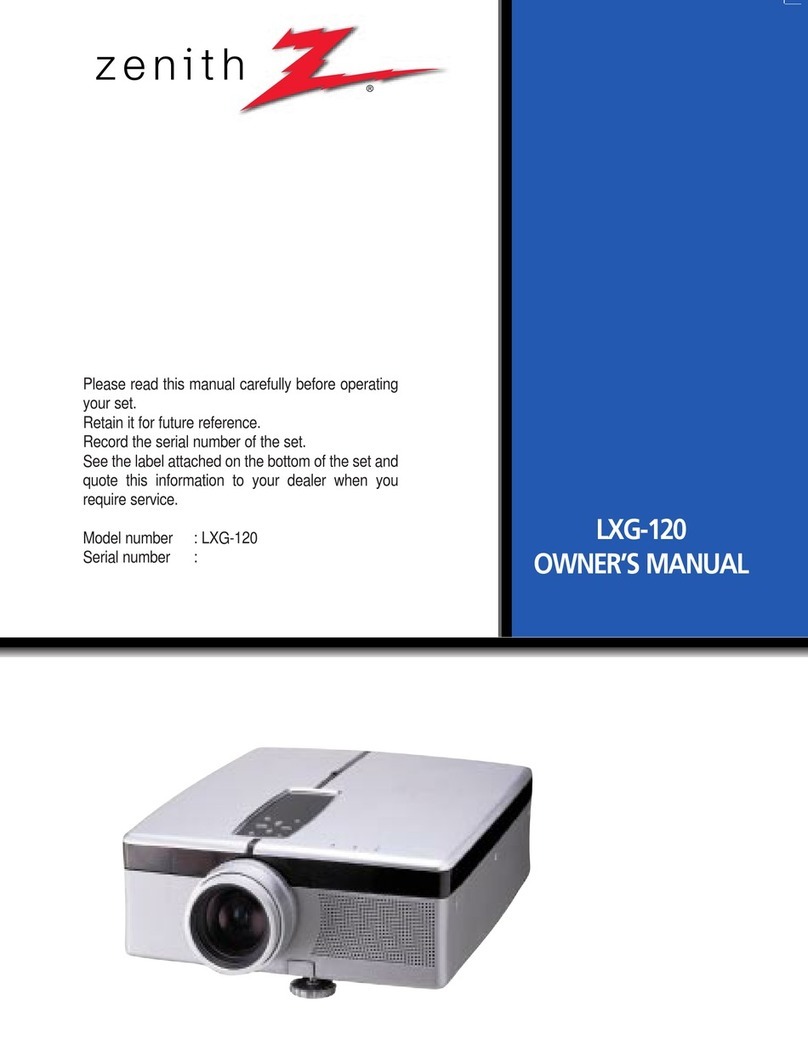
Zenith
Zenith LXG-120 User manual

Zenith
Zenith LXG-120 User manual

Zenith
Zenith PRO895X Assembly instructions
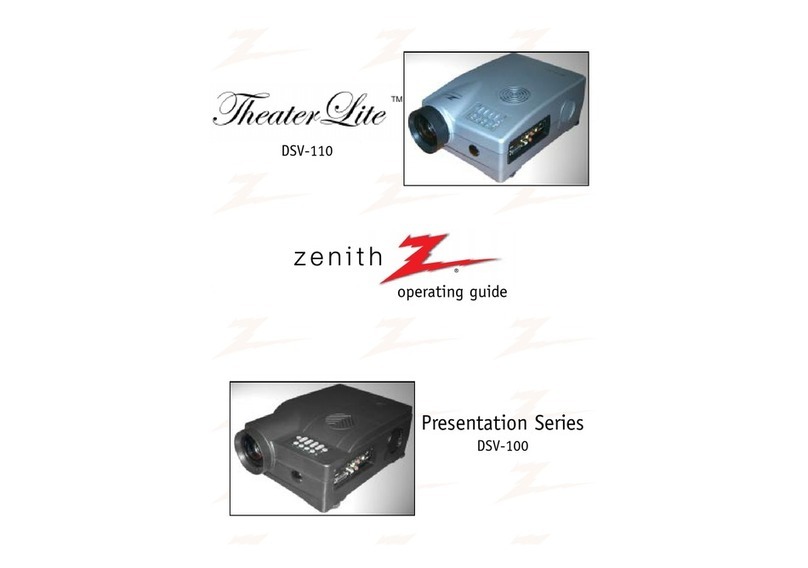
Zenith
Zenith DSV-110 User manual
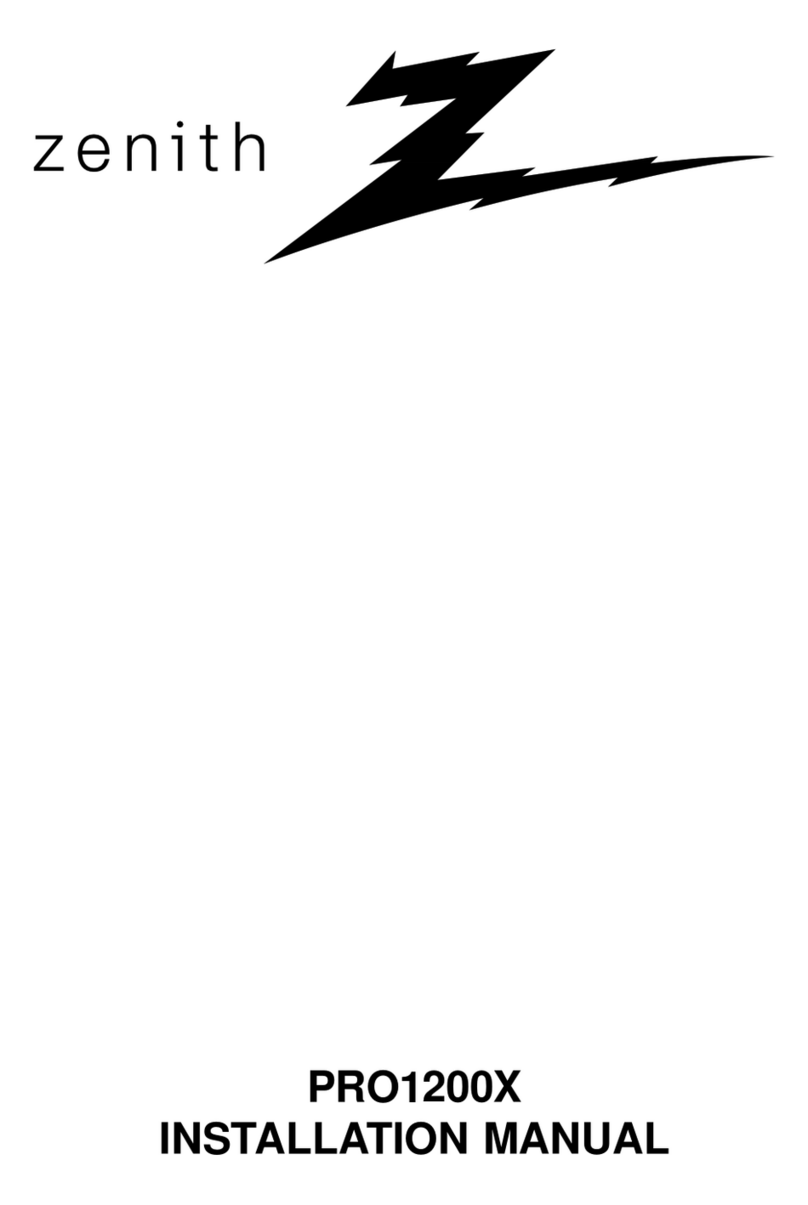
Zenith
Zenith PRO1200X User manual

Zenith
Zenith Presentation PRO900X Installation guide

Zenith
Zenith LXG-135 User manual

Zenith
Zenith PRO1200X User manual
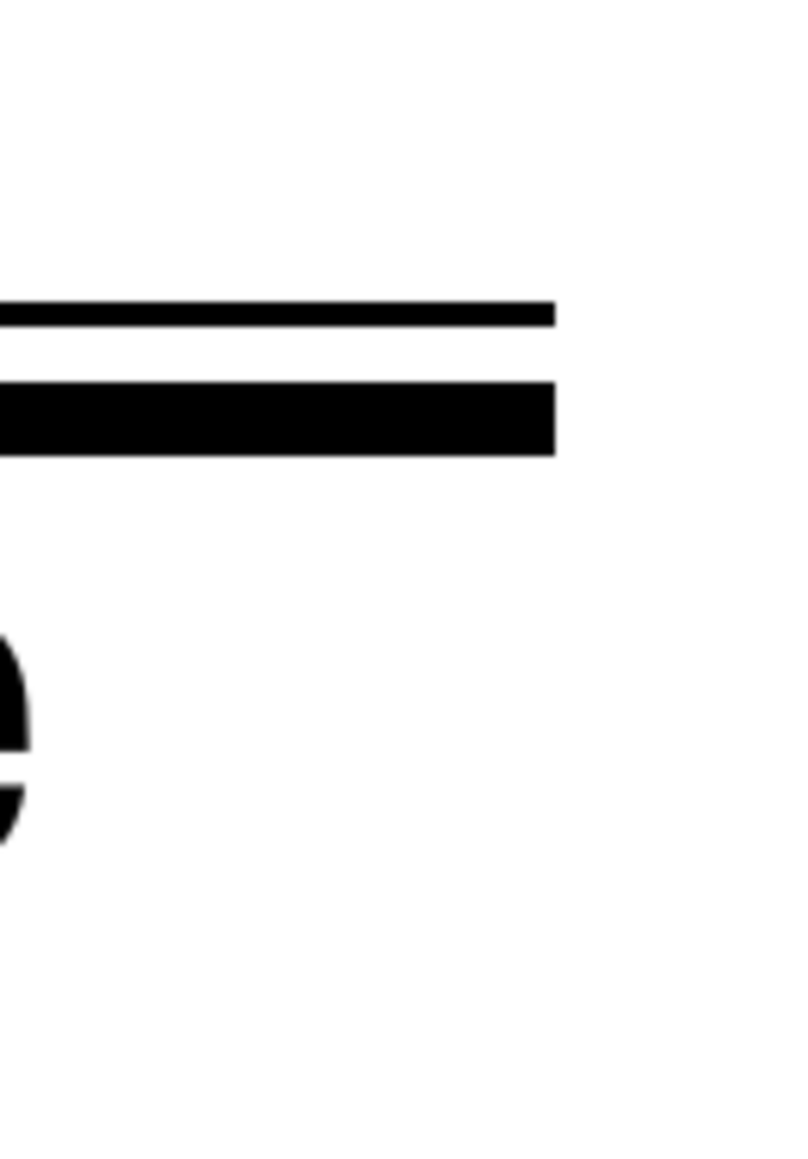
Zenith
Zenith TheaterLite DXG-210 User manual
